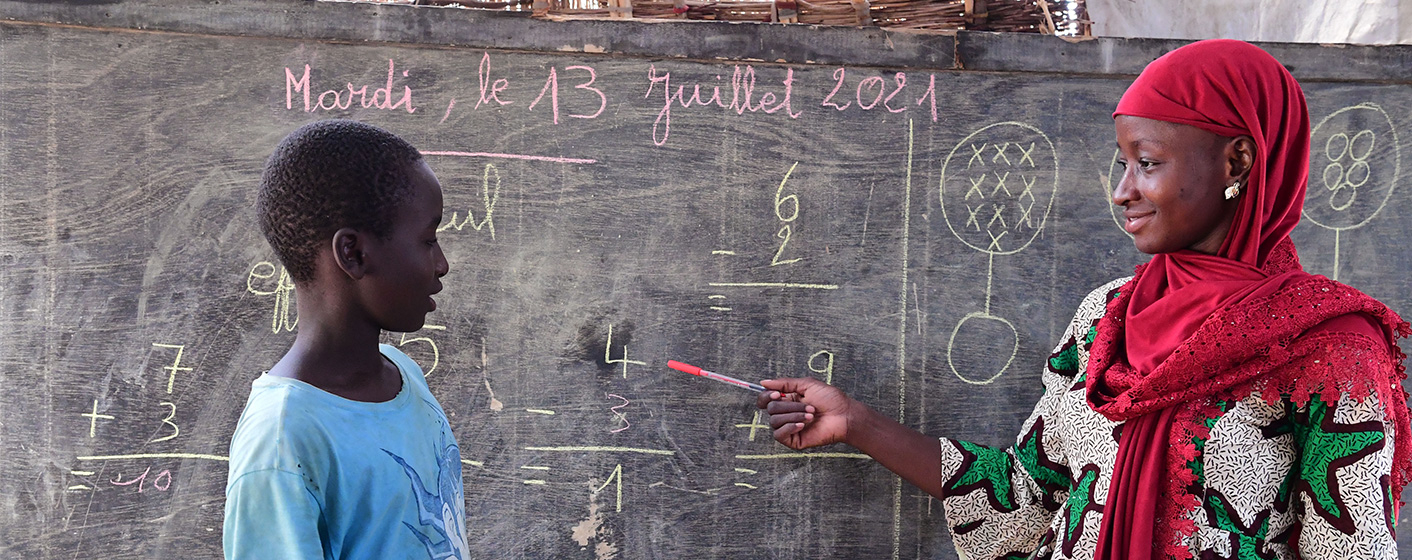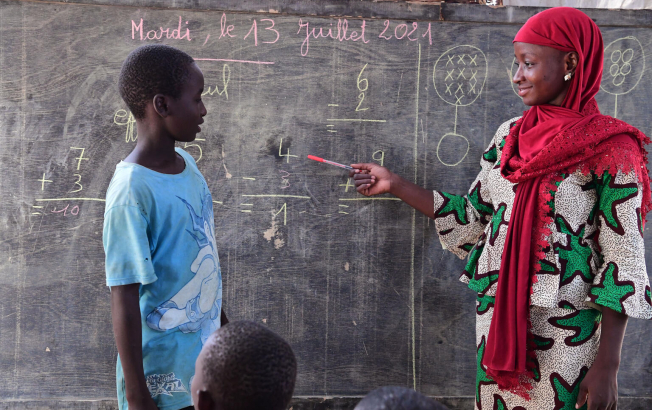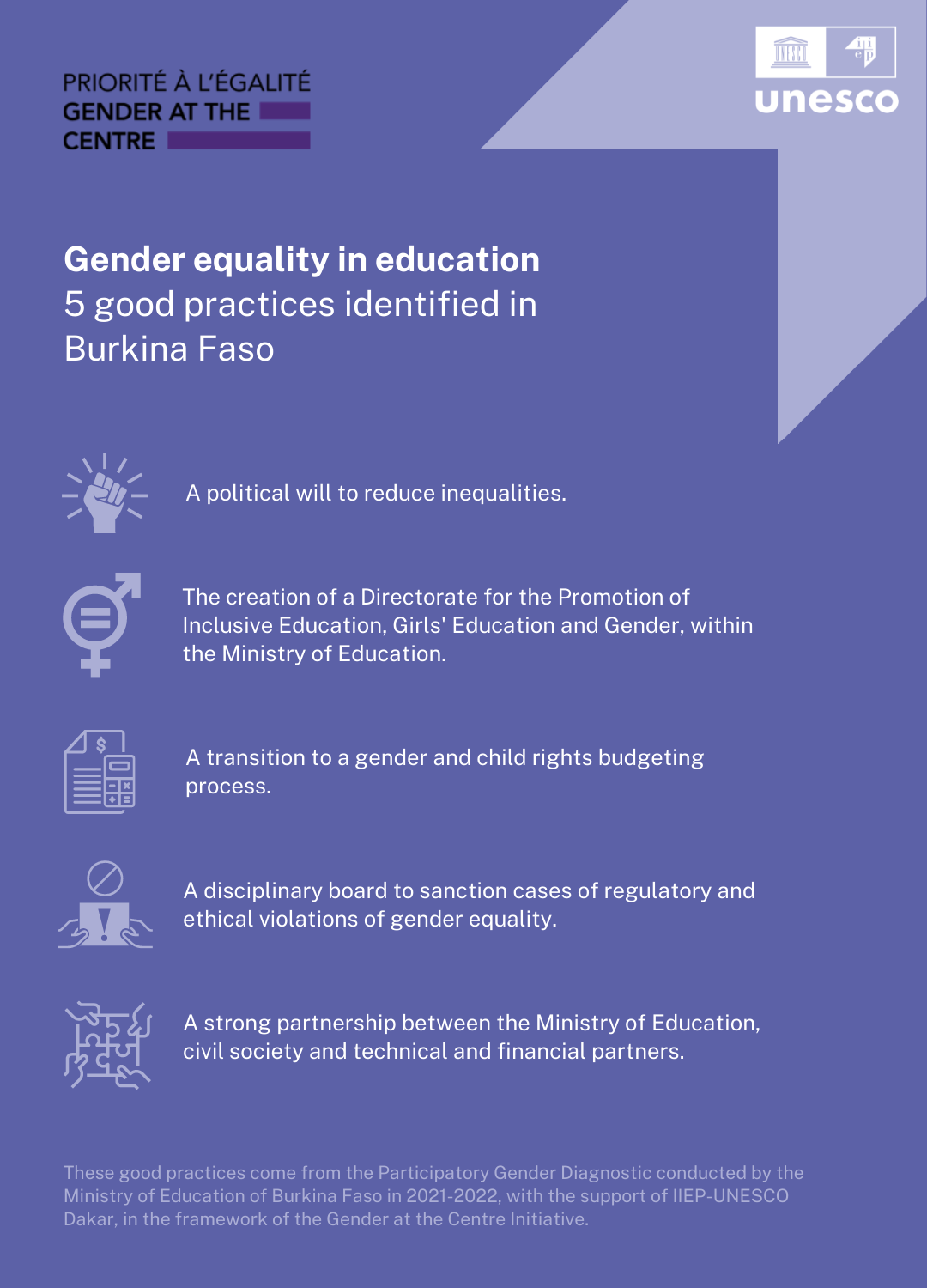Gender and education: what about the ministries? The case of Burkina Faso
Gender awareness, the proportion of male and female teachers, gender mainstreaming in education policies... to what extent do the staff of ministries of education grasp these key notions and figures, and their subtle underlying issues? In Burkina Faso, the Ministry of Education, Literacy and the Promotion of National Languages (MENAPLN) (recently conducted a Participatory Gender Diagnostic, with the support of IIEP-UNESCO Dakar, to identify good practices, shortcomings and avenues for progress in terms of gender equality and the mainstreaming of gender. Carried out within the framework of the Gender at the Centre Initiative (GCI), this exercise aims to promote concrete and effective integration of gender equality and equity at the different levels of the country's educational administrations.
Good practices praised
In Burkina Faso, significant efforts have been made over the past ten years to promote gender equality and equity in education. This political will has been reflected in a National Strategy for Accelerating Girls' Education for the period 2011-2021 and the current National Gender Strategy for 2020-2024. It was also demonstrated, in 2014, by the creation of a Directorate for the Promotion of Inclusive Education, Girls' Education and Gender within the MENAPLN. To give just a few examples, the Ministry of Education now involves gender specialists in the design and revision of textbooks and curricula, to ensure that they are free from gender stereotypes. In addition, since 2019, many ministries in Burkina Faso have begun to implement gender- and child rights-sensitive planning and budgeting, taking into account these two cross-cutting themes in their budgeting process. However, despite this commitment and the significant progress observed in promoting girls' enrolment, significant gender disparities remain in the education sector in Burkina Faso. Literacy, performance in primary school mathematics, access to post-primary and secondary education... inequalities persist in these areas, most often to the detriment of girls and young women. Within the education system, too, women are in the minority in the teaching force - especially at post-primary level - and under-represented in strategic positions in the ministry.
How to explain and fill the gaps?
To find answers and levers of action, the Burkinabe Ministry of Education conducted a Participatory Gender Diagnostic with the support of IIEP-UNESCO Dakar.




